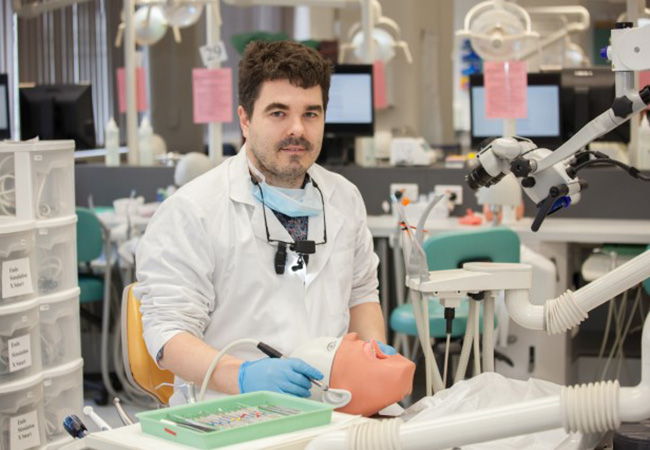
Associate Professor Jonathan Broadbent.
Fillings in your teeth? If both local and global trends are anything to go by, soon they won't have anything to do with mercury.
A study into filling materials used at the University of Otago Faculty of Dentistry, New Zealand's only dental school, found a significant reduction in use of amalgam fillings over the past 20 years.
The study, which was conducted to inform teaching and curriculum changes at the Faculty of Dentistry, and to promote debate on how the New Zealand dental profession should prepare for the imminent amalgam-free future of dentistry, has just been published in Operative Dentistry.
The use of amalgam decreased from 52.3 per cent of fillings in 1998 to 7.1 per cent in 2017. A corresponding increase was observed in the use of tooth-coloured filling materials.
The study also included data from respondents to a national survey of New Zealand dental practitioners, which showed 64 per cent considered composite resin to be their preferred filling material, while only 13 per cent favoured amalgam.
The international Minamata Convention on Mercury has the potential to substantially affect the use of amalgam even further. When it is ratified by New Zealand, dentists and the dental education system will be obliged to take steps to reduce risk of population exposure to mercury. Its nine steps include, among others, requirements to set national objectives to minimise use of dental amalgam; the promotion of alternatives; and promotion of research and development of mercury-free alternatives.
“Despite having no official policy on reducing the use of dental amalgam, if the current rate of decline of its use continues, Otago's Faculty of Dentistry could become amalgam-free in the next year or two,” study lead author Associate Professor Jonathan Broadbent says.
“Mercury is an environmental hazard, so by extension dental amalgam is. Teeth with amalgam fillings in them are classified by the New Zealand Dental Council as hazardous waste and, if disposed of incorrectly, they can contaminate the environment.
“Our dental school has already stopped putting any amalgam in baby teeth. My view is that it is time to stop doing it to all teeth.
“Amalgam has allowed people to keep teeth that otherwise could not have been saved, as it was the only real option available. However, there are now filling materials that perform better, and which have the benefit of not containing mercury.”
This doesn't mean that people should rush out and have their old fillings replaced, he says.
Associate Professor Broadbent believes the end of use of dental amalgam is approaching sooner rather than later and that the Faculty of Dentistry is ready for this step forward.
Publication details
The Dental Amalgam Phasedown in New Zealand: A 20-year Trend
J.M. Broadbent, C.M. Murray, D.R. Schwass, M. Brosnan, P. Brunton, K.M. Lyons, W.M. Thomson
Operative Dentistry
https://doi.org/10.2341/19-024-C
For more information, contact:
Associate Professor Jonathan Broadbent
Faculty of Dentistry
University of Otago
Email jonathan.broadbent@otago.ac.nz
FIND an Otago Expert
Use our Media Expertise Database to find an Otago researcher for media comment.